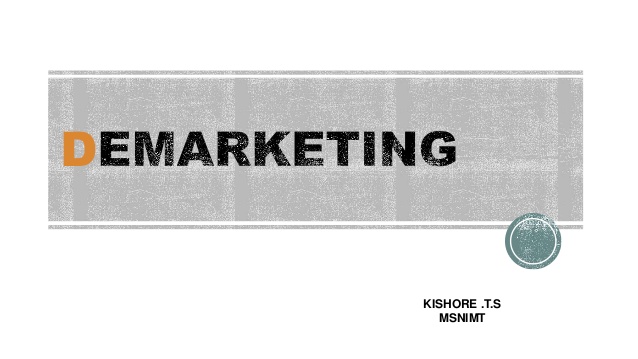By creating a market development strategy, businesses can find potential areas for growth. Learn how to build an effective market development strategy, and put it into practice if you want to increase the range of goods and services you provide or investigate potential new target markets. This article defines a market development strategy, discusses its significance, outlines the steps you can take to create one, and offers an example of a productive market development strategy.
Market Development Strategy
Introducing current products to new markets is the main objective of a market development strategy, which aims to expand a company’s market share. Businesses frequently employ market development strategies to locate and create new opportunities for the sale of their goods in as-yet-untapped markets.
Businesses can also create a new product line that will be offered to current customers or upsold to potential new ones using a market development strategy. A cell phone manufacturer, for instance, might decide to begin producing smartwatches. They can market this new product to potential customers and sell it to their current customers.
The approach helps a business with planned, organized growth and client acquisition. By engaging new audiences, it is possible to generate more leads, sales, and revenue. However, depending too heavily on a particular market is dangerous because if it shrinks, the company will fail.
Types of Market Development Strategy
#1. Geographic Expansion
By expanding geographically, you can introduce your product to new customers. By extending geographically, you can offer your product to more people. Here is an illustration. If you are currently providing services to Americans, you can conduct extensive research to attract clients from around the world. If you are currently only providing your services to tech companies in San Francisco, find out if you can also assist those in New York.
#2. Bringing in the Clientele of Rivals
You will face competition when you are on the market. those who produce goods similar to yours and cater to the clients who are also on your list of target clients. By lowering the price or providing incentives, you can persuade those customers to use your products. Aiming to provide a better user experience or taking into account audiences who look like them in advertising are other options.
#3. Upselling to Current Customers
When considering a new product, consider whether some or all of your current customer base will benefit from it. If so, introduce the new product through your existing relationships with customers.
#4. Attracting Non-users
In addition to attempting to sell your new product to your existing clientele, you can also try to draw in non-customers. You have a variety of ways to approach them. You can take any or all of these into consideration, from providing free trials to making cold calls or merely promoting your products to them.
Advantages of Market Development Strategy
#1. Enhances Product Quality
Companies consider how to make the product better to attract new customers. This might entail including new features. Upselling is a sales technique that encourages current customers to make larger purchases. Customers are given the option to purchase an enhanced or more expensive version of the item they had originally intended to purchase.
#2. Aids in the Development of New Products
Businesses may need to introduce new products to draw in a certain market segment. As a result, a market development strategy emphasizes grabbing their attention and meeting their needs.
#3. Increases Revenue Margins
The need to produce new income is what motivates the market development strategy. Profit rises as the number of customers and subsequent sales rise. This enables the production of goods in large quantities, which lowers the cost per unit of production. Naturally, this also results in increased profit.
Disadvantages of Market Development Strategy
#1. Capital Investment Is Necessary
Financial investment is typically needed for expansion. If the money spent on the new section does not produce the desired effects, the exercise is pointless. These assets could have been applied to the execution of different strategies.
Market development is costly, and the main barrier that businesses must get over is their desire to get involved. As a result, maintaining the project requires a sizable financial investment.
#2. Risky
The business frequently experiments with new ideas while exploring new markets and niches. There is no assurance that these concepts will function. The possibility of something going wrong exists at all times.
#3. Competition
You will have to outbid established competitors who already hold a majority of the market when you enter a new market. To overcome this obstacle, you must create and polish your distinctive value proposition that appeals to and resonates with your target market.
#4. Lack of Brand Recognition
Brand recognition takes time to grow after a company enters a new market. Customers prefer to purchase from well-known brands because they are probably not familiar with yours. Investments in marketing and advertising activities that increase brand recognition and trust are necessary when you enter a new market. This may involve social media marketing campaigns, public relations initiatives, and targeted digital advertising that emphasizes the distinctive value of your product.
Benefits of a Market Development Growth Strategy
Strategies for market expansion are essential for growth. With the aid of a market development growth strategy, businesses can direct their efforts in a way that expands the company and promotes market development. Proper risk management and in-depth market research are used to achieve this and avoid common pitfalls that arise when attempting to expand a business.
What Is a Market Development Strategy Example
#1. Slack (SaaS)
The fact that Slack started as an internal business tool made it inevitable that it would grow to be a well-liked business communication tool. A live product could be thoroughly tested without being made available to the general public. This was crucial to Slack’s market development strategy, which is based on using actual user behaviors to direct its marketing and development initiatives.
Slack was able to make minor changes to its platform to attract more users by utilizing actual user data and paying attention to what users wanted.
#2. Starbucks (non-SaaS/food and drink)
Starbucks employs a very aggressive approach to market expansion. The business has put a lot of effort into expanding into new markets because it has a strong business model and product line. By establishing a global franchise, they have concentrated on gaining a significant share of the market.
How to Build a Market Development Strategy
There are some basic steps you can take to get started, even though every business may choose a slightly different approach to build a market development strategy that works for their industry, products, and goals. Here are some pointers you can use to develop a successful market development strategy:
#1. Determine Your Target Market
If you intend to build a market development strategy, and launch your product in a new industry, start by figuring out who your target market is. You can develop a buyer persona to assist you in analyzing the motivations, characteristics, and backgrounds of this target market to ascertain whether your offering may be of interest to them.
#2. Analyze Your Market
After determining who your target market is, carry out a competitive analysis to identify any potential rivals. To identify your advantages, disadvantages, opportunities, and threats from the competition, perform a SWOT analysis.
surveying your existing clientele Make sure you comprehend what existing customers want and how you can offer them more value if you intend to increase the range of products you currently offer to upsell to them. Before creating new products, you can survey your existing customers to gauge their interest.
#3. Investigate Your Development Options
Before entering a new market or creating a brand-new product, identify your biggest development opportunities. This can give you information to support your goals and help you decide which opportunities might be the most profitable.
#4. Set Your Growth Objectives
Think about the areas of your company you want to grow by launching a new product or entering a new market. The next step is to develop SMART goals for each area you want to focus on. An objective that meets the SMART criteria is time-based, relevant, specific, measurable, and achievable.
For instance, if your main objective is to increase sales, your SMART goal might be to do so by 30% over the following six months. You can develop specific, doable goals using this method that you can communicate to your team, important stakeholders, and business executives.
#5. Set Aside Funds
After that, decide which essential resources you will need to achieve your growth objectives. These resources can differ from industry to industry, but they frequently include raw materials, machinery, software, personnel, promotional items, and initial funding. To stay organized, you can either create a list or use a project management tool to keep track of these resources. To find the project management software tool that best meets your needs, use a search engine to compare the available options.
You can start figuring out where to get them once you have made a list of the essential resources you require. To make sure you are well-prepared to increase your product line or launch your current products into a new market, think about including a backup option for each resource. This can help you ensure your initial launch is successful.
#6. Create a Marketing Strategy
After allocating the required funds, collaborate with your marketing team to create a launch strategy for your new product or an outreach campaign to attract new clients to an existing product. You could increase demand and brand recognition by doing this.
To find out which marketing channels your target audience prefers, you can review the research you have gathered about them. Together with your marketing team, decide on KPIs for your campaign, such as the number of contacts made or website clicks, that will measure its success. Then, monitor these KPIs throughout the campaign to spot potential improvement areas and gauge your success.
#7. Launch your Product
After careful consideration and research, it is time to either introduce a new product into the market or broaden the appeal of your current offerings. Informing your team honestly about your objectives, progress, and next steps will improve your chances of success. To make sure they are aware of their responsibilities and how success will be measured, you can give key team members access to your comprehensive campaign and sales plan. To keep your team organized and on task, give frequent status updates on the launch schedule, upcoming projects, and deadlines.
#8. Analyze your Results
Tracking your results will help you make sure that your objectives are met and that your customers are happy after you have launched your new product or entered a new market. As quickly as possible, begin gathering sales data. You can use this data to determine whether you can meet your projections and gauge how successful your launch was.
To achieve your objectives, it can also assist you in pinpointing areas that need improvement and campaign optimization. Use this information to present your conclusions to important company executives and stakeholders, and then, finally, to the public. This can help you clarify the outcomes of your market development strategy and the actions you intend to take moving forward.
Guidelines for Developing a Market Development Strategy
#1. Communicate Clearly
Make sure every team member is aware of your objectives and the responsibilities assigned to them to successfully implement your market development strategy. Communicate critical information in plain language, and follow up frequently with team members to address any queries they might have.
#2. Write Down Crucial Information
Spend some time writing down the essential components of your market development plan. This can make it easier for you to communicate your strategy to significant stakeholders and give you a reference point for each stage of your plan.
#3. Invest in the Appropriate Software and Tools
Examine various software programs and tools that can assist you in tracking the KPIs you have chosen to gauge the expansion of your business. By making the appropriate software investment, you can boost productivity, enhance communication, and cut down on time.
#4. Be Flexible
It takes flexibility to adjust to emerging consumer trends and market shifts when entering a new market or creating a new product. To determine whether some elements of your plan require revision, review your market development strategy frequently and pay attention to your KPIs.
What Is Product Development Strategy?
A product development strategy involves creating new products or altering existing ones to make them appear brand-new, then introducing those products to existing or emerging markets. Sales and market share can increase when it is carried out effectively. This strategy entails your business planning and creating new products or improving existing ones, then introducing them to an existing market.
What Is Market Development Process?
Market development refers to the series of steps taken to expand your company into new markets, whether by expanding the market for your current product or by diversifying your company’s offerings. By developing products that meet customers’ needs and target a wider market segment, businesses can grow their customer base and become more competitive.
What Are the Three Types of Market Development Strategies?
Three distinct market development strategies exist distribution, pricing, and geographic expansion.
The Stages of Strategy Development Are?
- Choose your strategic stance.
- Establish your vision.
- Set your strategic goals in order of importance.
- Choose who to include in the development of the strategy.
- Determine how to distribute your resources.
- Start the execution now.
- Review and refocus.
- Reward successful performance
What Are the 5 Types of Strategy in Strategic Management?
- Corporate strategy
- Business strategy
- Functional strategy
- Operational strategy
- Competitive strategy
What Makes a Market Development Strategy Important?
The importance of a development strategy can be summed up as the foundation for a company’s planned and systematic expansion and client acquisition. You can increase leads, sales, and revenue by interacting with new audiences. A company runs the risk of failing if it relies too heavily on a specific market, which could shrink.
Conclusion
To reach target markets that they have not yet attained or are not currently being served by their products or services. Businesses and organizations use market development strategies as a part of their growth plans. Businesses may find it advantageous to create a market development strategy to pinpoint potential areas for growth. The business can increase the range of goods and services it provides by investigating a new target market. By increasing exposure and broadening the image being developed, it builds a brand.
Market development has a direct impact on how your company grows. This has as its primary objective—and if executed properly—increasing your sales. However, remember that there will always be some inherent risks whenever you try something new. Therefore, it is essential to take into account the risk factors in this circumstance. After all, you will not want to risk losing money while trying something new.
Related Articles
PRODUCT DEVELOPMENT STRATEGY: How to Create a Product Development Strategy
WHAT IS PRODUCT MARKETING: What It Is, Examples & Guide
BUSINESS DEVELOPMENT MANAGER JOB DESCRIPTION: All You Should Know
Everything You Need to Know About Marketing Objectives






